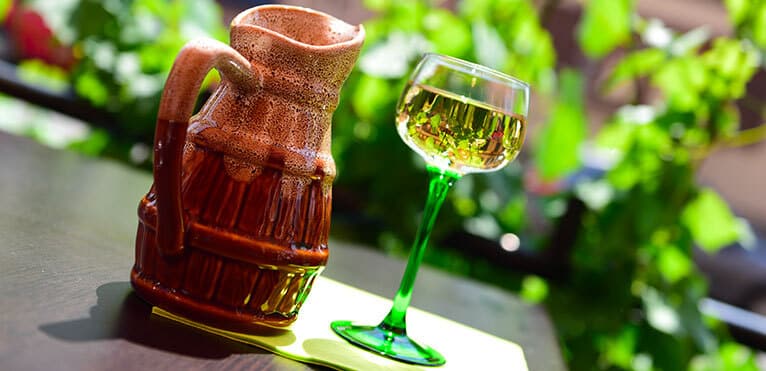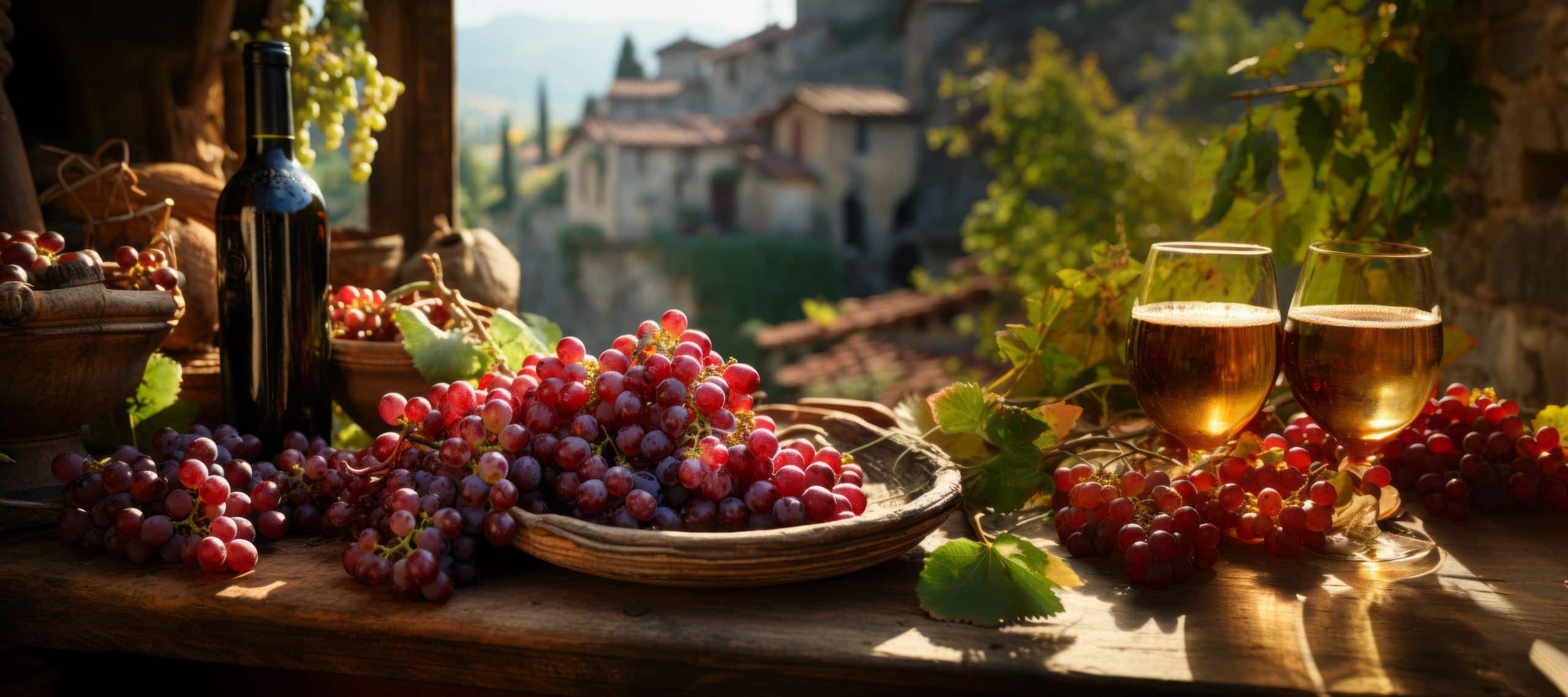
Contents
Alsace … a land of traditions, including sauerkraut, Saint Nicolas, tarte flambée, Christmas markets and Alsatian beers. A rich heritage that makes Alsatians proud. But how can you talk about Alsace without mentioning Alsatian wines and their famous glasses?
Alsace, a land of wines since the 1st century
Let’s start with a brief introduction to the Alsace wine region. Developed by the Romans in the 1st century, Alsace’s vineyards have undergone many changes over the course of history. With a surface area of around 15,500 hectares, Alsace accounts for 2.5% of national production. Stretching over a 17-kilometer strip of land between Strasbourg and Mulhouse, the region benefits from a microclimate that is particularly well-suited to vine-growing. Protected by the Vosges mountains from rain and wind, Alsace vines also benefit from good exposure to the sun. Grape varieties such as Gewurztraminer, Riesling, Muscat and Pinot Gris give rise to three AOCs: Alsace, Alsace Grand Cru and Crémant d’Alsace.
A short history of the wine glass … in glass
In the XIIIth The first glass wine glass appeared in the Italian town of Murano in the 19th century. Once made of lead, silver or pottery, glass wine glasses developed rapidly with industrialization. The different French wine regions then created their own glass, from the Champagne cup to the Burgundy glass. The Alsatian wine glass, with its long green stem, is intriguingly original.
But why does the Alsatian wine glass have a green stem?
Long before the traditional Alsatian wine glass we know today, Alsatian winegrowers used small, green, opaque cups called “Rutscherle” for tastings, to mask the many particles suspended in the wine. But the story of Alsatian glass doesn’t end there.
The ancestor of Alsatian glass, the “Roemer” Rhenish glass, was introduced as early as the 17th century, and both strongly resemble each other with their elongated stems. The traditional wine glass was born in the 19th century. Alsatian wines, of poor quality as a result of early harvesting of low-quality grape varieties coupled with crude interventions such as chaptalization, are highly acidic and develop a greenish color. To disguise this color, Alsatian winegrowers came up with an idea: create a glass with a green stem, pretending that the wine’s color was merely an optical effect. An ingenious concealer!
Alsatian glass today
Traditional glasses are rather fragile and not very conducive to tasting (too small to oxygenate the wine), so they remain mainly a decorative element or reserved for festive tables. After the creation of the INAO glass in 1970, the Strasbourg restaurant “Au crocodile” came up with a glass that respects tradition but is also ideal for tasting. The “Grand Sommelier Jung”, with its slender but transparent base, was born.
The Alsatian wine glass lends itself to elegant white wines with discreet acidity.
As we say in Alsace, “Gsundheit” (health!).




